Playdough is one of the most fun and accessible tactile mediums in preschool settings. In my over twenty years of working with children, I have not met a child who turned down the opportunity to play with playdough. Undeniably, children enjoy exploring and expressing their imaginations via their unique playdough designs. It offers young children a rich, multi-sensory, and gratifying learning experience. Engaging with this versatile material offers a plethora of developmental and educational benefits.
As a pediatric occupational therapist, I love how manipulating playdough helps children develop fine motor skills. Squishing, rolling, flattening, kneading, shaping, pinching, and poking is a fantastic way to help strengthen muscles in the hands and fingers.
Let’s keep the enthusiasm high and fuel the magic with fun and easy playdough activities.
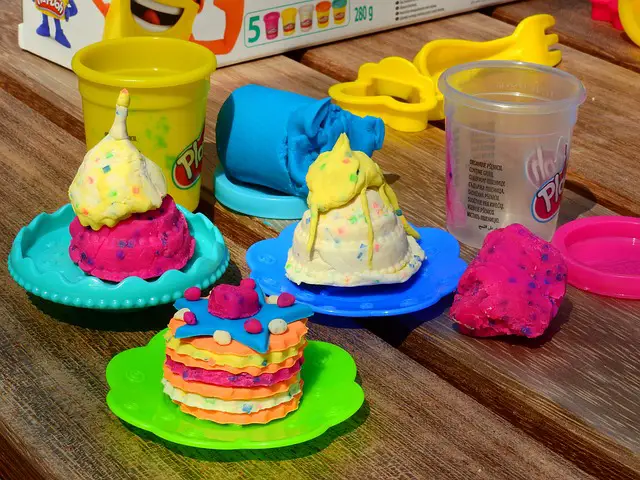
Bakery
Provide children with baking-themed tools, like cookie cutters, rolling pins, and cupcake liners. Please encourage them to create cookies, donuts, cakes, pies, ice cream, and other treats. Certainly, baking activities can spark imaginative play for bakers or customers. Dust it with glitter or make tiny sprinkles for a final touch. What a fun and imaginative play.
Animals
Supply googly eyes, feathers, and pipe cleaners. Ask children to create their favorite animals or invent new ones. Building animals can lead to discussions about different animals’ habitats, sounds, and characteristics.
Treasure Hunt
Hide small objects like beads or coins within the playdough for kids to discover and extract. Children like digging and poking with their little fingers. Besides, it is a perfect way to enhance sensory exploration and fine motor skills.
Nature Impressions
Gather leaves, twigs, shells, small rocks, or pinecones. Allow children to press these items into the playdough to observe and discuss the patterns and textures they leave behind.
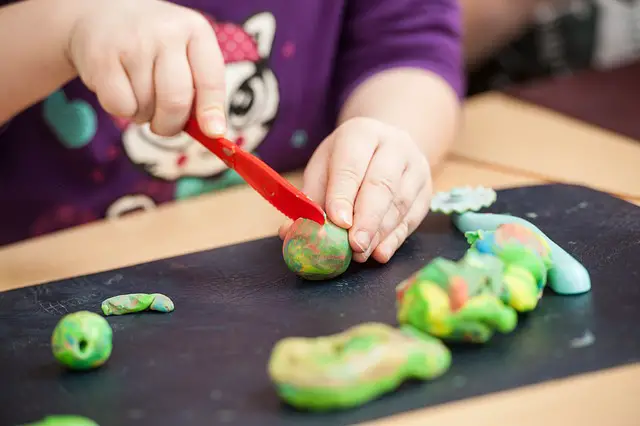
Kitchen
Lead pretend play about what food we make in the kitchen. Use a garlic press or extruder to create spaghetti or noodles. Make a pizza, add toppings like olives, pepperoni, mushrooms, and sprinkle with cheese. Serve fruit for dessert, like blueberries and strawberries, or make a fruit salad.
Playdough Mats
Create or print out laminated mats with outlined images or scenes. Children can then use playdough to complete the pictures, such as placing apples on a tree, making fish in an underwater scene, or forming flowers in a garden.

Playdough Shapes
Roll, squeeze, knead, and create different shapes. Make circles, ovals, crescents, squares, rectangles, triangles, and diamonds. Sort them into categories, for example, round and linear or small and big. Use different tools, molds, and stamps.
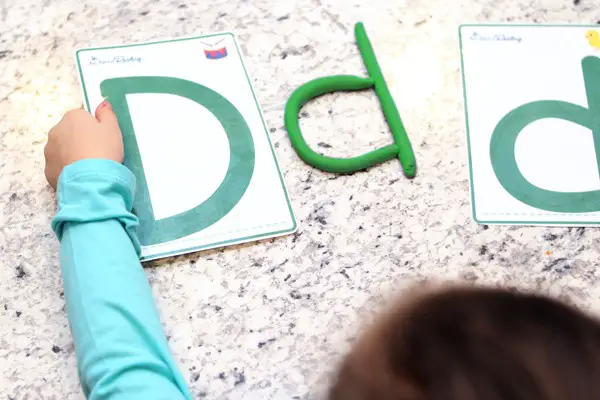
Playdough Letter and Number Formation
Encourage children to form letters and numbers. Use playdough to make the letters of the alphabet, and shape a few items that begin with the letter, such as an apple or airplane for the letter “A.” Older preschoolers might work on forming letters of their first name to build a foundation for name writing. Furthermore, copy numbers and then count out corresponding small playdough balls. Number and letter stamps and molds are also great for introducing children to literacy and numeracy concepts in a tactile manner.
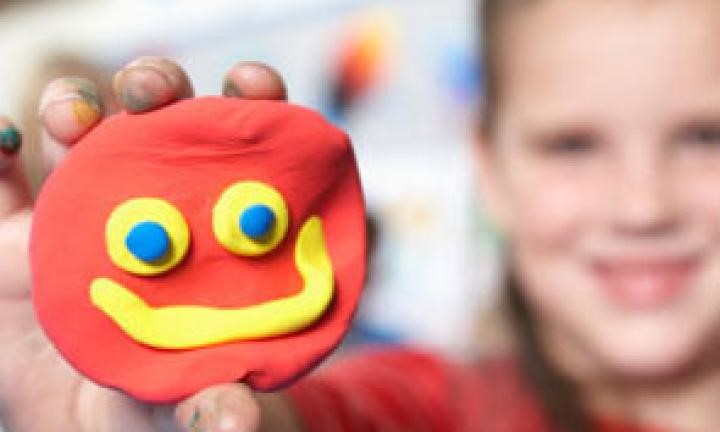
Portraits
Kids can create faces, adding details like eyebrows, ears, and hair. Craft different facial expressions – happy, sad, mad, angry, and more. It is an excellent opportunity for children to express their feelings and discuss emotions. Finally, children can practice forming and combining different shapes to create a self-portrait, adding all body parts.
Roads and Traffic
Flatten a layer of playdough to act as the ground, imprint roads, and make traffic lights, trees, and buildings. Play with cars and appreciate the newly constructed setting.
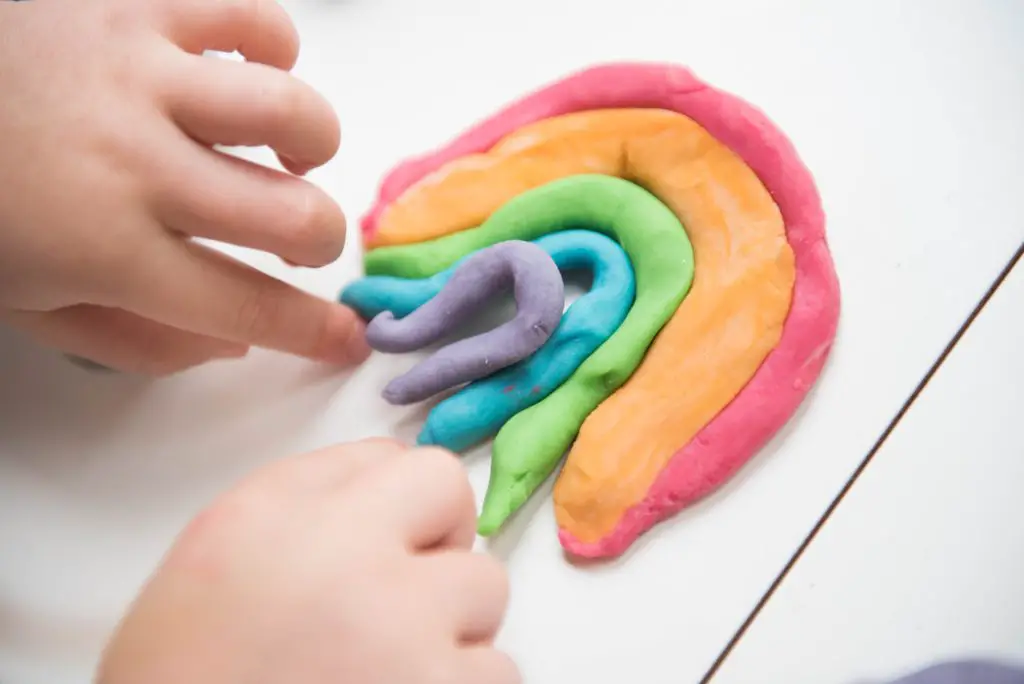
Storytelling with Playdough
Create characters and settings using playdough and then ask the children to craft a story around them. Indeed, telling a story by making unique characters fosters creativity, language development, and sequencing skills.
Color Mixing
Provide primary-colored playdough and allow children to mix them to discover secondary colors. Finding new colors offers a hands-on lesson in basic color theory. Additionally, mix colors that are available and discuss outcomes.

Playdough Cutting Practice
Let kids roll playdough into “snakes” and then practice their cutting skills using child-safe scissors to cut them into small pieces. Subsequently, includes more complex cutting practices, such as:
- Flattening a large selection of playdough.
- Drawing a shape on playdough.
- Cut out the form.
Volcano
Form a volcano shape with playdough. Place a small cup or container inside the top, fill it with baking soda, and the kids add a few drops of vinegar to witness a “volcanic eruption.”
Dentist Play
Children can make teeth using white playdough and use tools to pretend to be dentists. Use different colors or additional media, such as beads for teeth germs. Shortly, remove germs with tweezers and floss teeth with a string.
Puzzles
Flatten a large piece of playdough and then cut it into puzzle shapes using a plastic knife. Lastly, let children put the pieces back together while strengthening spatial reasoning skills.
Patterns
Encourage kids to make patterns by placing beads, coins, small pegs, or other objects onto flattened playdough. Markedly, children learn to make predictions, understand what comes next, and practice logical connections and reasoning skills.
Holiday Activities
Creating decorations for holidays is always enjoyable. Christmas, Halloween, or Easter provides multiple ideas for designing items like trees, pumpkins, or eggs. My favorite activity around Christmas time is making our holiday-scented frosting dough.
Bonus Tips
- Use popsicle sticks, plastic knives, toothpicks, and buttons to add more dimensions.
- Incorporate sensory materials like sand, rice, or beads for an extra tactile experience.
- For a multi-sensory twist, use scented playdough. Add food extracts or essential oils to homemade dough.
- Include creative add-ins: googly eyes for creature creations, pipe cleaners for arms, legs, or antennas; beads and buttons for decorating or creating patterns; straws to make imprints or structures; nature-leaves nature, twigs, or shells can be pressed for unique designs.
- Use a variety of playdough mats to expand ideas.
- Making playdough at home can be a fun activity to do with kids. There are plenty of fantastic recipes online.
- Always supervise young children, especially with added small items.
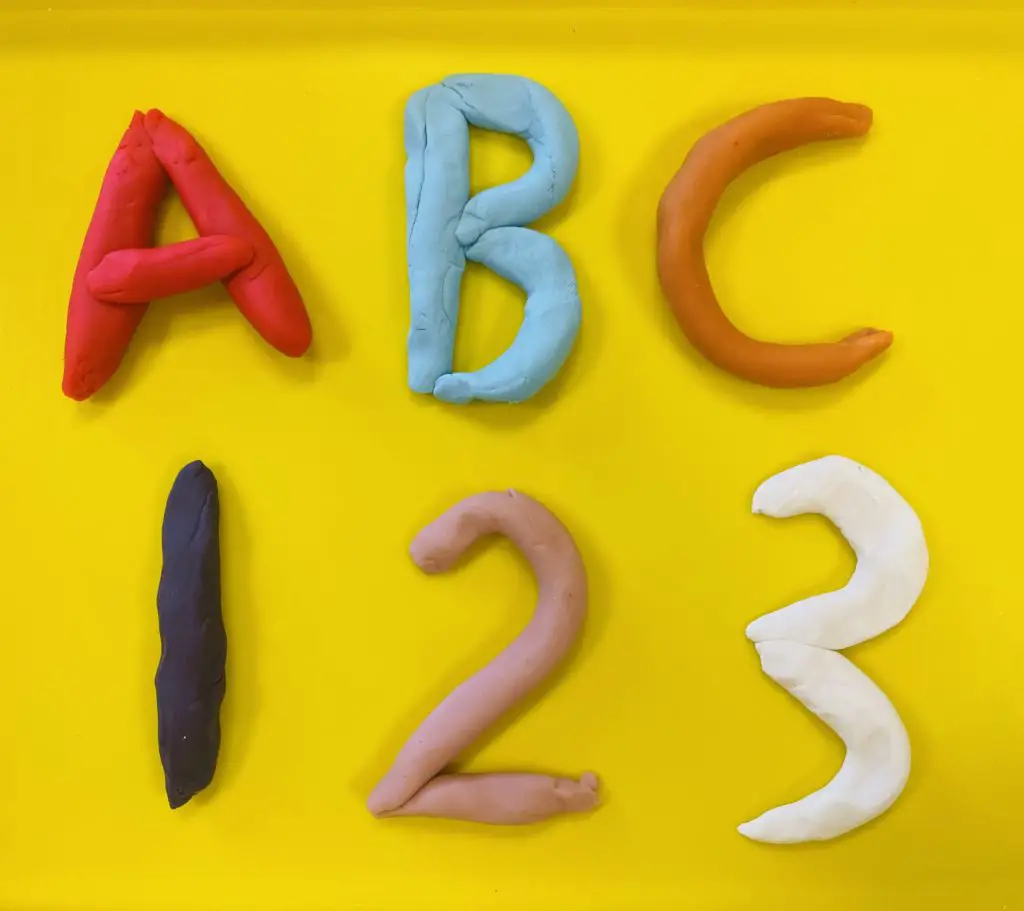
Summary
The beauty of playdough is its versatility. It offers endless possibilities for creative activities that engage children in playful learning. Playdough is a staple in many preschool classrooms and a favorite activity among children and educators. It is a world of exploration, imagination, and developmental benefits rolled into one colorful dough.
Enjoy the endless fun!
How to Make Holiday Frosting Dough
Discover Why is Messy Play Important
10 Easy Activities to Improve Hand Strength in Children
10 Reasons Block Play Skills Are Essential for Children
Powerful Sensory Integration in Children
Fun Animal Walk Exercises for Children
*Kids Groove and Grow participates in the Amazon Services LLC Associates Program, an affiliate advertising program designated to provide means for sites to earn advertising fees by advertising and linking to Amazon.com.


0 Comments